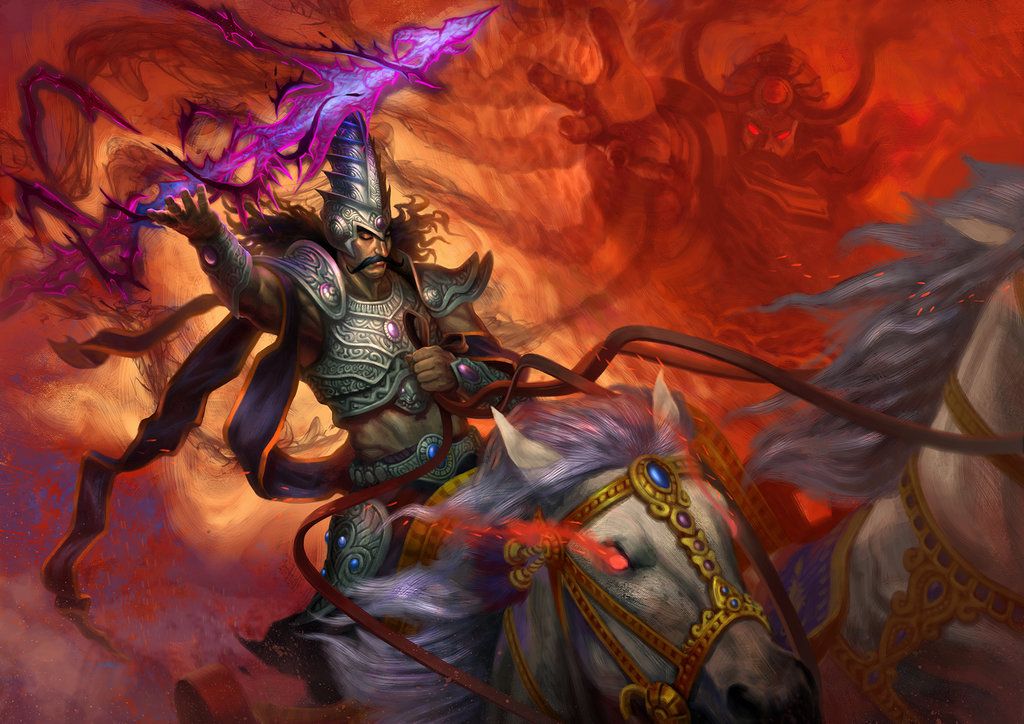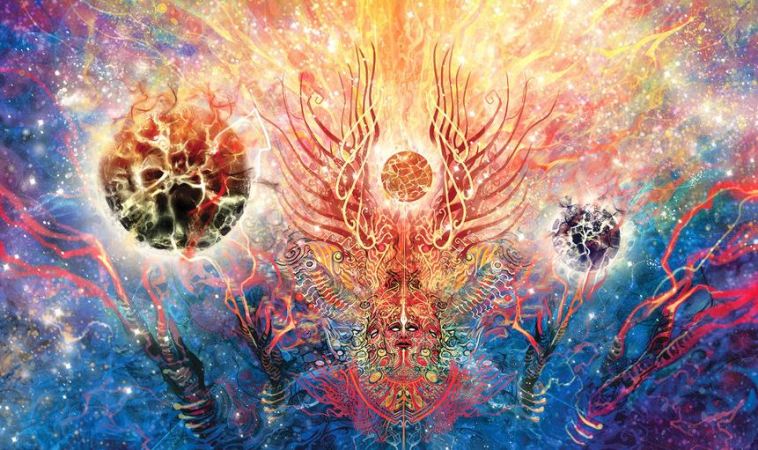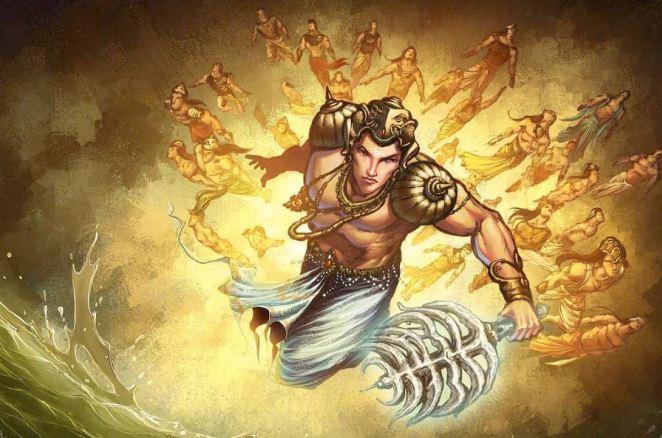Divya Astra (The divine weapons) of the two Indian epics, the Mahabharata & the Ramayana, play a central and ubiquitous role in the narratives. Nevertheless, the subject has been woefully neglected.
Divya Astra cannot be properly understood without
a of the concept of Tejas. https://abs.twimg.com/emoji/v2/... draggable="false" alt="🧵" title="Thread" aria-label="Emoji: Thread">
https://abs.twimg.com/emoji/v2/... draggable="false" alt="🧵" title="Thread" aria-label="Emoji: Thread">
Divya Astra cannot be properly understood without
a of the concept of Tejas.
Tejas governs the way the divine weapons operate in the mythology, here are the some “intrinsic laws” which were codified systematically in nature and function of Divya Astra. Tejas is central theme in the existence of divine weapon which historians have ignored.
First, the divine weapons are much more destructive than an ancient musket or cannon could ever have been.
Secondly, the fire of the divine weapons is not the element itself, but the more subtle energy-substance Tejas or “fiery energy".
Secondly, the fire of the divine weapons is not the element itself, but the more subtle energy-substance Tejas or “fiery energy".
The divine weapons are best understood as “God-given inner potencies & spiritual forces available to man, rather than physical instruments of destruction.”
Divine weapons are signs – direct indicators of an
ontology that the epic wished to express about their universe.
Divine weapons are signs – direct indicators of an
ontology that the epic wished to express about their universe.
Tejas, The Sanskrit word derives from the root "tij", meaning “to be sharp” appears in older examples of Vedic literature. but Tejas features as a psychosomatic characteristic of individual beings and not just Sharp Edge of Weapon.
By the time of the Upanishad. Tejas surpasses other
energy-substances while incorporating their diverse roles.
It becomes the central creative principle of the supreme god, and furthermore, the energy of all movement and activity (rajogun. a) in the universe.
energy-substances while incorporating their diverse roles.
It becomes the central creative principle of the supreme god, and furthermore, the energy of all movement and activity (rajogun. a) in the universe.
It is further ascribed to be the subtle essence of the Hindu atman or “soul”, and thus “is the ever-changing energy which is passed on along the downward current of evolution and taken back in involution. Hence,
Lord Krishna, can conclude this lines in the Bhagavad-Gita; https://abs.twimg.com/emoji/v2/... draggable="false" alt="👇" title="Down pointing backhand index" aria-label="Emoji: Down pointing backhand index">
https://abs.twimg.com/emoji/v2/... draggable="false" alt="👇" title="Down pointing backhand index" aria-label="Emoji: Down pointing backhand index">
Lord Krishna, can conclude this lines in the Bhagavad-Gita;
“Whatever being possesses power, wisdom, prosperity, or is endowed with strength, know that it originates
from but a fragment of my tejas.”
Tejas can be classified into 4 kinds:
1. earthly (bhauma), such as fire;
2. divine (divya), such as lightning, or the constellations;
from but a fragment of my tejas.”
Tejas can be classified into 4 kinds:
1. earthly (bhauma), such as fire;
2. divine (divya), such as lightning, or the constellations;
3. physiological and
4. mineral such as metals, jewels
On the subtle level, as an energy, tejas is responsible for
knowledge, and when in excess is highly destructive. For example, seers are referred to as tejasvins, and can threaten the universe with their energy.
4. mineral such as metals, jewels
On the subtle level, as an energy, tejas is responsible for
knowledge, and when in excess is highly destructive. For example, seers are referred to as tejasvins, and can threaten the universe with their energy.
The concept of divine weapons is fluid – they are weapons of energy. There is virtually no limit to the way they manifest themselves
They can be it a subtle forces of explosive power, like a massive fireball, or tangible instruments of death that are physically held, or both.
They can be it a subtle forces of explosive power, like a massive fireball, or tangible instruments of death that are physically held, or both.
Through incantations (mantras) a divya astra is generally
united with a normal weapon (sastra) – typically arrows – which obviously makes the latter more effective. divine weapons are closely connected with such emotions as rage and anger.
united with a normal weapon (sastra) – typically arrows – which obviously makes the latter more effective. divine weapons are closely connected with such emotions as rage and anger.
When unleashed they invoke all the raw power of a warrior’s fury, infused with the Tejas of the gods, and thus are capable of laying waste hundreds of opponents in one concentrated act of violence. Most divine weapons are named after the deities who preside over them.
A large array of divine weapons exists, which produce storms, lightning, fire, wind, typhoons, mountains, rain.
Likewise, on a more physiological level, there is the Prasvapa-astra (“Sleep-weapon”) which is countered by the Sambodhana-astra (“Awakening-weapon”).
Likewise, on a more physiological level, there is the Prasvapa-astra (“Sleep-weapon”) which is countered by the Sambodhana-astra (“Awakening-weapon”).
There are also the three ultimate divine weapons;
the Brahmastra of Brahma , the Narayana-astra relating to
Lord Vishnu, and the Pasupata astra of Lord Siva.
All divya astras are weapons of a single divine energy – Tejas.
CC : @wh0mi_ @sambhashan_in
the Brahmastra of Brahma , the Narayana-astra relating to
Lord Vishnu, and the Pasupata astra of Lord Siva.
All divya astras are weapons of a single divine energy – Tejas.
CC : @wh0mi_ @sambhashan_in

 Read on Twitter
Read on Twitter " title="Divya Astra (The divine weapons) of the two Indian epics, the Mahabharata & the Ramayana, play a central and ubiquitous role in the narratives. Nevertheless, the subject has been woefully neglected. Divya Astra cannot be properly understood withouta of the concept of Tejas. https://abs.twimg.com/emoji/v2/... draggable="false" alt="🧵" title="Thread" aria-label="Emoji: Thread">" class="img-responsive" style="max-width:100%;"/>
" title="Divya Astra (The divine weapons) of the two Indian epics, the Mahabharata & the Ramayana, play a central and ubiquitous role in the narratives. Nevertheless, the subject has been woefully neglected. Divya Astra cannot be properly understood withouta of the concept of Tejas. https://abs.twimg.com/emoji/v2/... draggable="false" alt="🧵" title="Thread" aria-label="Emoji: Thread">" class="img-responsive" style="max-width:100%;"/>







